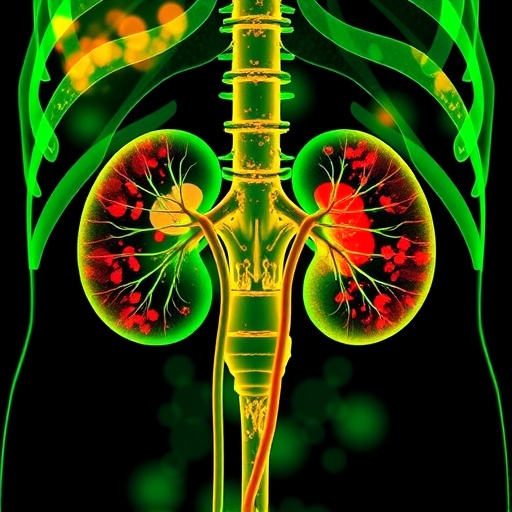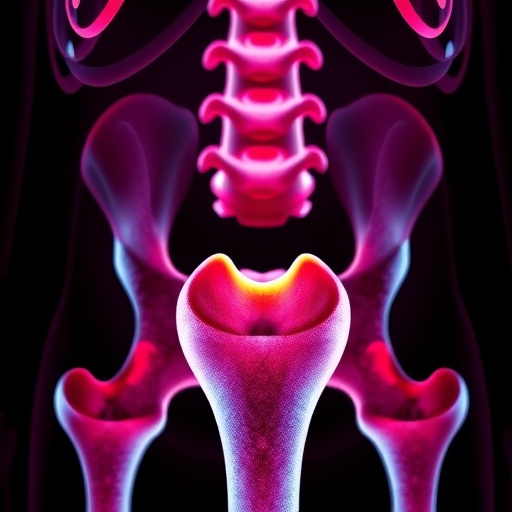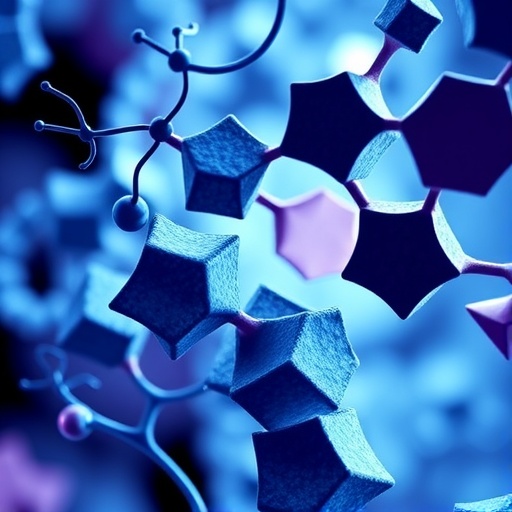In a groundbreaking advance poised to reshape the landscape of preoperative cancer diagnostics, researchers have unveiled a sophisticated deep learning approach using CT scans to predict tumor staging in clear cell renal cell carcinoma (ccRCC). This multicenter study leverages cutting-edge artificial intelligence to enhance the precision of T and TNM staging, critical elements in planning effective treatment strategies for this prevalent kidney cancer subtype. By integrating a novel Transformer-ResNet (TR-Net) architecture, the research promises to reduce traditional reliance on subjective radiological interpretation and the inconsistent variability it entails.
The study, encompassing data from over a thousand ccRCC patients collected retrospectively across five distinct medical centers, reflects one of the most comprehensive efforts to date to apply AI in this clinical context. The researchers combined data from two centers for model development and testing, while further data from three additional centers served as external validation sets, ensuring the robustness and generalizability of the models. Such a vast, multicenter dataset is crucial for training AI systems that maintain accuracy across diverse populations and imaging protocols.
Central to this endeavor were two 3D deep learning models designed explicitly for preoperative staging tasks: one targeting tumor size and extent classification (T staging) categorized into T1, T2, and combined T3 + T4 stages, and the other predicting the full TNM stage spectrum from I through IV. These models utilized corticomedullary phase CT scans, a crucial imaging phase highlighting tumor vascularity and structure, which offers rich information pivotal for staging analysis. The incorporation of a Transformer-ResNet backbone enabled the models to capture complex spatial relationships within volumetric imaging data efficiently.
Performance metrics across the validation cohorts underscored the promising capabilities of these AI tools. For T staging, the models achieved micro-average AUC values exceeding 0.93, indicating excellent overall discriminatory power, accompanied by macro-average AUCs close to 0.85 and accuracy rates surpassing 84% on average. Similarly, for TNM staging, micro-AUCs hovered around 0.93 with macro-AUCs between 0.81 and 0.89, reflecting the consistent precision across different staging categories. These results suggest that AI-assisted staging could feasibly complement or even surpass traditional radiological evaluations for preoperative staging.
However, the models showed relatively diminished accuracy when identifying advanced tumor subclasses, particularly T3 + T4 tumors and stage III in the TNM classification. AUC values in these categories ranged from approximately 0.67 to 0.80, indicating moderate performance and highlighting ongoing challenges in differentiating more complex tumor presentations. These findings emphasize the nuanced difficulties deep learning models face when confronting heterogenous and often ambiguous radiographic features typical of higher-stage tumors.
To enhance clinical interpretability, the researchers employed Gradient-weighted Class Activation Mapping (Grad-CAM), visualizing the model’s focal areas within the tumor regions during prediction. These heatmaps not only asserted that the AI anchored its decisions on clinically relevant tumor characteristics but also offered a transparent mechanism to build clinician trust in the algorithms. Interpretability remains a crucial step toward regulatory acceptance and real-world deployment of AI in healthcare.
Importantly, the study extended beyond pure algorithmic development by implementing a human-machine collaboration experiment, revealing that radiologists supported by AI predictions achieved higher diagnostic accuracy than either operating alone. This synergistic effect suggests deep learning models are not intended to replace medical expertise but rather to augment radiologists’ capabilities, reduce interobserver variability, and foster more standardized staging outcomes essential for personalized therapy.
The technical backbone of the deep learning methodology consisted of a Transformer-ResNet architecture, tailored to integrate the strengths of convolutional neural networks in feature extraction with the sophisticated contextual learning capabilities of transformer units. This hybrid design enables the model to effectively analyze 3D volumetric data, capturing the intricate texture and morphological patterns that inform tumor staging in ccRCC. Such architectural innovations represent a vital advance over previous 2D or less context-aware approaches.
While the current results indicate substantial progress, the authors acknowledge that further refinement is necessary, particularly in enhancing performance for advanced-stage tumors. This may involve incorporating multimodal imaging inputs, finer-grained subclassifications, or supplementary clinical data to enrich model context. Moreover, prospective studies and integration into clinical workflows are essential next steps to validate utility and impact in routine oncology practice.
The translational potential of this research is significant. Accurate preoperative staging guides surgical planning, eligibility for targeted therapies, and prognostication. By providing radiologists with interpretable, AI-driven insights, these models may expedite decision-making, improve patient outcomes, and reduce healthcare costs driven by diagnostic uncertainty or treatment complications. Given the global burden of kidney cancer, accessible AI tools could become invaluable in diverse healthcare settings.
This study also exemplifies the growing trend toward leveraging multi-institutional collaborations in medical AI research, which is critical to overcoming overfitting and ensuring model generalizability across populations and hardware variability. The robust external validations employed here serve as a benchmark for future investigations aiming to translate AI models from experimental settings into dependable clinical assets.
In conclusion, this seminal investigation into CT-based deep learning for ccRCC staging marks a transformative step forward in oncologic imaging. By harnessing advanced neural architectures and extensive multicenter data, the research outlines a path toward more objective, reproducible, and clinically empowering diagnostic tools. While further enhancements remain imperative, the demonstrated interpretability and human-machine synergy provide a compelling blueprint for the future integration of AI into cancer care paradigms.
As the medical community increasingly embraces artificial intelligence, studies such as these underscore the critical balance between technological innovation and clinical applicability. Future directions may explore real-time decision support during surgical and interventional procedures, integration with pathology and genomics, and expansion to other malignancies. Ultimately, AI-powered imaging analyses promise to sharpen the precision of cancer staging and personalize treatment strategies, bringing tangible benefits to patient care worldwide.
These pioneering CT-based 3D TR-Net deep learning models thus represent not only a technical achievement but also a catalyst for evolving multidisciplinary collaboration and a more nuanced understanding of cancer heterogeneity. Their deployment in clinical practice could redefine standards of care in renal oncology and potentially serve as a template for AI applications across myriad disease states.
Subject of Research: Preoperative T and TNM staging in clear cell renal cell carcinoma using CT-based deep learning
Article Title: Multicenter study of CT-based deep learning for predicting preoperative T staging and TNM staging in clear cell renal cell carcinoma
Article References:
Li, W., Xi, Y., Lu, M. et al. Multicenter study of CT-based deep learning for predicting preoperative T staging and TNM staging in clear cell renal cell carcinoma. BMC Cancer 25, 1604 (2025). https://doi.org/10.1186/s12885-025-14836-z
Image Credits: Scienmag.com
DOI: https://doi.org/10.1186/s12885-025-14836-z
Tags: 3D deep learning models for medical imagingartificial intelligence in radiologyclear cell renal cell carcinoma researchCT scan analysis for cancerdeep learning in cancer diagnosticsenhancing precision in cancer treatment planningimproving accuracy in cancer diagnosticskidney cancer staging using AImulticenter study on ccRCCpreoperative tumor staging methodsretrospective data analysis in healthcareTransformer-ResNet architecture in medicine





